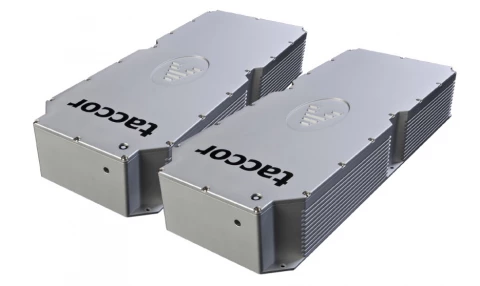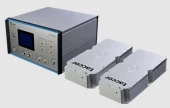Description
The Novanta ASOPS Engine is a state-of-the-art femtosecond spectroscopy system, specifically designed for high-speed, high-precision applications. Featuring a dual laser setup with options for 1 GHz or 84 MHz repetition rates, this system sets new standards in time-domain spectroscopy by delivering unprecedented time resolutions of less than 60 fs for the 1 GHz model and below 100 fs for the 84 MHz model.
Central to the ASOPS Engine's performance is its advanced master-slave configuration, which allows for the synchronization of two femtosecond lasers with a precise offset in their repetition rates. This unique setup enables continuous and automated variation of the time delay between the pump and probe pulses, eliminating the need for mechanical delay lines and significantly reducing the complexity and time required for setup and measurements.
The system is equipped with the TL-1000 ASOPS electronic unit, which stabilizes the repetition rate of the slave laser, providing a stable and consistent performance even at the high offset frequencies required for ultrafast spectroscopy. This capability is essential for applications such as two-dimensional thickness measurements, where sub-nanometer resolution is crucial.
Moreover, the ASOPS Engine supports a wide range of scientific and industrial applications, from studying ultrafast phenomena in materials science to precision metrology in engineering. Its robust design and comprehensive software integration, including the HASSP-Scope software for data acquisition and analysis, make it a turn-key solution for researchers seeking reliable and accurate time-resolved measurements.
Novanta ASOPS Engine: Ultra-Precise Femtosecond Spectroscopy System with 1 GHz Repetition and <60 fs Time Resolution
Specifications
| Rep Rate: | 84 – 1000 MHz |
|---|---|
| Time Resolution: | 60 - 100 fs |
| Time Delay Window: | 1 - 11.9 ns |
| Typical Repetition Rate Offset: | 2-20 kHz |
| Time Resolution: | 60-100 fs |
| Maximum Data Acquisition Speed: | Up to 20 kHz |
Features
- Advanced Asynchronous Optical Sampling (ASOPS) technology
- Choice of 1 GHz or 84 MHz femtosecond laser options
- Ultrafast time-resolution: < 60 fs for 1 GHz lasers, < 100 fs for 84 MHz lasers
- High-speed data acquisition up to 20 kHz
- Turn-key system with integrated TL-1000 ASOPS unit for repetition rate stabilization
- Enables two-color pump-probe experiments
- Compact and robust design suitable for laboratory and industrial environments
Applications
- Asynchronous Optical Sampling (ASOPS) time-domain spectroscopy
- Ultrafast pump-probe experiments
- Optical coherence tomography (OCT)
- Optical metrology and inspection
- High-speed optical signal processing
Frequently Asked Questions
What is ASOPS technology, and how does the ASOPS Engine utilize it?
How does the ASOPS Engine ensure precise timing and synchronization?
Can the ASOPS Engine be customized for specific research needs?
What are the environmental requirements for operating the ASOPS Engine?
Similar Products
Your inquiry has been received.
Create an account by adding a password
Why create an account?
- Auto-complete inquiry forms
- View and manage all your past messages
- Save products to your favorites
- Close your account anytime — no hassle



